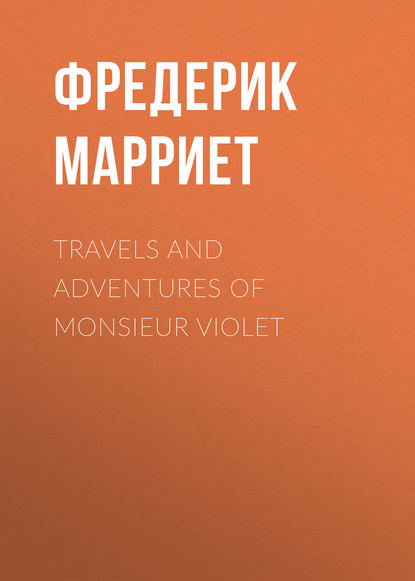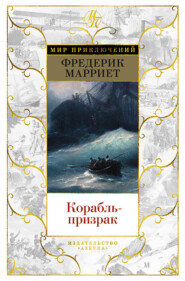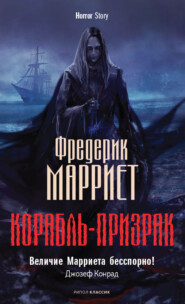По всем вопросам обращайтесь на: info@litportal.ru
(©) 2003-2025.
✖
Travels and Adventures of Monsieur Violet
Автор
Год написания книги
2019
Настройки чтения
Размер шрифта
Высота строк
Поля
I remember a particular instance; it was at the settlement. I was yet a boy, and during the hotter hours of the day, I used to take my books and go with one of the missionaries to study near a torrent, under the cool shade of a magnolia.
All the trees around us were filled with numerous republics of squirrels, scampering and jumping from branch to branch, and, forgetful of every thing else, we would sometimes watch their sport for hours together. Among them we had remarked one, who kept solitary between the stems of an absynth shrub, not ten yards from our usual station. There he would lie motionless for hours basking in the sun, till some other squirrels would perceive him. Then they would jump upon him, biting and scratching till they were tired, and the poor animal would offer no resistance, and only give way to his grief by plaintive cries.
At this sight, the good Padre did not lose the opportunity to inculcate a lesson, and after he had finished speaking, he would strike his hands together to terrify the assailants.
“Yes,” observed I, using his own words, “it is nature.”
“Alas! no,” he would reply; “’tis too horrible to be nature; it is only one of the numerous evils generated from society.” The Padre was a great philosopher, and he was right.
One day, while we were watching this pariah of a squirrel, we detected a young one slowly creeping through the adjoining shrubs; he had in his mouth a ripe fruit, a parcimon, if I remember right. At every moment he would stop and look as if he were watched, just as if he feared detection. At last he arrived near the pariah, and deposited before him his offering to misery and old age.
We watched this spectacle with feelings which I could not describe; there was such a show of meek gratitude in the one and happiness in the other, just as if he enjoyed his good action. They were, however, perceived by the other squirrels, who sprang by dozens upon them; the young one with two bounds escaped, the other submitted to his fate. I rose, all the squirrels vanished except the victim; but that time, contrary to his habits, he left the shrub and slowly advanced to the bank of the river, and ascended a tree. A minute afterwards we observed him at the very extremity of a branch projecting over the rapid waters, and we heard his plaintive shriek. It was his farewell to life and misery; he leaped into the middle of the current, which in a moment carried him to the shallow water a little below.
In spite of his old age, the Padre waded into the stream and rescued the suicide. I took it home with me, fed it well, and in a short time its hair had grown again thick and glossy. Although left quite free, the poor animal never attempted to escape to the woods, and he had become so tame, that every time I mounted my horse, he would jump upon me and accompany me on my distant excursions. Eight or ten months afterwards he was killed by a rattle-snake, who surprised him sleeping upon my blanket, during one of our encampments.
The End
notes
1
Indians living on the Columbian River, two hundred miles above Fort Vancouver, allied to the Nez Percés, and great supporters of the Americans.
2
Name given to the half breeds by the Spaniards, but by Indians comprehending the whole Mexican race.
3
The “spirit of the young beaver;” a name given to me when I was made a warrior.
4
Two priests, literally two black gowns.
5
When a chief wishes to go to war, he sends to his warriors some leaves of tobacco covered with vermilion. It is a sign that they must soon be prepared.
6
The American travellers (even Mr Catlin, who is generally correct) have entirely mistaken the country inhabited by the Shoshones. One of them represents this tribe as “the Indians who inhabit that part of the Rocky Mountains which lies on the Grand and Green River branches of the Colorado of the West, the valley of Great Bear River, and the hospitable shores of Great Salt Lakes.” It is a great error. That the Shoshones may have been seen in the above-mentioned places is likely enough, as they are a great nation, and often send expeditions very far from their homes; but their own country lies, as I have said, betwixt the Pacific Ocean and the 116th degree of west longitude. As to the “hospitable” shores of the Great Salt Lake, I don’t know what it means, unless it be a modern Yankee expression for a tract of horrid swamps with deadly effluvia, tenanted by millions of snakes and other “such hospitable reptiles.” The lake is situated on the western country of the Crows, and I doubt if it has ever been visited by any Shoshone.
7
Skeletons of the mammoth are often found whole at the foot of the Grand Serpent, a long rugged mountain which runs for 360 miles under the parallel of 40 degrees north latitude. It extends from the centre of the Shoshone territory to the very country of the Crows, that is to say, from the 119th to the 113th degree west longitude. It is possible that this race may not have been yet quite extinct in the middle of the 17th century; for, indeed, in their family records, aged warriors will often speak of awful encounters, in which their great-great-grandfathers had fought against the monster. Some of them have still in their possession, among other trophies of days gone by, teeth and bones highly polished, which belong indubitably to this animal, of which so little is known. Mr Ross Cox, in the relation of his travels across the Rocky Mountains, says, “that the Upper Crees, a tribe who inhabit the country in the vicinity of the Athabasca river, have a curious tradition with respect to these animals. They allege, ‘that these animals were of frightful magnitude, that they formerly lived in the plains, a great distance in the south, where they had destroyed all the game, after which they retired to the mountains. They killed every thing, and if their agility had been equal to size and ferocity, they would have destroyed all the Indians. One man asserted, that his great-grandfather told him he saw one of those animals in a mountain-pass, where he was hunting, and that on hearing its roar, which he compared to loud thunder, the sight almost left his eyes, and his heart became as small as that of a child’s.’”
8
A few miles from the Pacific Ocean, and at the foot of a mountain called by the Shoshones the Dwelling of the Monster, were found the remains of an immense lizard belonging to an extinct family of the saurian species. Within a few inches of the surface, and buried in a bed of shells and petrified fish, our old missionary, Padre Antonio, digged up fifty-one vertebrae quite whole and well preserved. They were mostly from twelve to eighteen inches in length and from eight to fourteen inches in diameter, measuring in all more than fifteen feet in length. Of the tail and neck but few vertebrae were found but there were many fragments of the ribs and of the leg bones. All the vertebrae discovered were in a continuous line, nearly joined together. The head, to correspond to other parts of the animal, must have been twelve or fourteen feet long, which would have given to the monster the almost incredible length of eighty feet.
The prince Seravalle, while digging in the fall of the year 1834, for an ammunition store on the western banks of the Buona Ventura, picked up a beautiful curved ivory tusk, three feet long, which, had it not been for its jet black colour, would have been amazingly alike to that of a large elephant.
Some pieces of it (for unhappily it was sawn into several parts) are now in the possession of the governor of Monterey and Mr Lagrange, a Canadian trader, who visited the territory in 1840.
9
Note one. The word Pawnee signifies “exiled,” therefore it does not follow that the three tribes bearing the same name belong to the same nation.
The Grand Pawnees, the tribe among whom Mr Murray resided, are of Dahcotah origin, and live along the shores of the river Platte; the Pawnee Loups are of the Algonquin race, speaking quite another language, and occupying the country situated between the northern forks of the same river. Both tribes are known among the trappers to be the “Crows of the East;” that is to say, thieves and treacherous. They cut their hair short, except on the scalp, as is usual among the nations which they have sprung from.
The third tribe of that name is called Pawnee Pict; these are of Comanche origin and Shoshone race, wearing their hair long, and speaking the same language as all the western great prairie tribes. They live upon the Red River, which forms the boundary betwixt North Texas and the Western American boundary, and have been visited by Mr Cattlin, who mentions them in his work. The Picts are constantly at war with the two other tribes of Pawnees; and though their villages are nearly one thousand miles distant from those of their enemy, their war-parties are continually scouring the country of the “Exiles of the East”—“Pa-wah-néjs.”
10
The Crows are gallant horsemen; but, although they have assumed the manners and customs of the Shoshones, they are of the Dahcotah breed. There is a great difference between the Shoshone tribes and the Crows. The latter want that spirit of chivalry so remarkable among the Comanches, the Arrapahoes, and the Shoshones—that nobility of feeling which scorns to take an enemy at a disadvantage. I should say that the Shoshone tribes are the lions and the Crows the tigers of these deserts.
11
There is every prospect of these north-western tribes remaining in their present primitive state, indeed of their gradual improvement, for nothing can induce them to touch spirits. They know that the eastern Indians had been debased and conquered by the use of them, and consider an offer of a dram from an American trader as an indirect attempt upon their life and honour.
12
Perhaps the English reader will find it extraordinary that Santa Anna, once freed from his captivity, should not have re-entered Texas with an overwhelming force. The reason is very simple: Bustamente was a rival of Santa Anna for the presidency; the general’s absence allowed him to intrigue, and when the news reached the capital that Santa Anna had fallen a prisoner, it became necessary to elect a new president. Bustamente had never been very popular, but having promised to the American population of the sea-ports, that nothing should be attempted against Texas if he were elected, these, through mercantile interest, supported him, not only with their influence, but also with their money.
When, at last, Santa Anna returned to Mexico, his power was lost, and his designs upon Texas were discarded by his successor. Bustamente was a man entirely devoid of energy, and he looked with apathy upon the numerous aggressions made by the Texians upon the borders of Mexico. As soon however, as the Mexicans heard that the Texians, in spite of the law of nations, had sent an expedition to Santa Fé, at the very time that they were making overtures for peace and recognition of their independence, they called upon Bustamente to account for his culpable want of energy. Believing himself secure against any revolution, the president answered with harsh measures, and the soldiery, now exasperated, put Santa Anna at their head forcing him to re-assume the presidency. Bustamente ran away to Paris, the Santa Fé expedition was soon defeated, and, as we have seen, the president, Santa Anna, began his dictatorship with the invasion of Texas (March, 1842).
13
It may appear singular to the reader that the Comanche, being always at war with the Texians, should not have immediately attacked the party under the orders of Hunt. But we were merely a hunting-party; that is to say, our band was composed chiefly of young hunters, not yet warriors. On such occasions, there is frequently, though not always, an ancient warrior for every eight hunters just to shew to them the crafts of Indian mode of hunting. These parties often bring with them their squaws and children, and never fight but when obliged to do so.
14
So sacred are the laws of hospitality among these indians, that a dozen lives would be sacrificed, if required, to save that of a guest. In sacrificing himself for Roche, the Comanche considered that he was doing a mere act of duty.
15
River bottom is a space, sometimes of many many miles in width, on the side of the river, running parallel with it. It is always very valuable and productive land, but unhealthy, and dangerous to cross, from its boggy nature.
16
I have said, at a venture, that we descended more than a hundred feet into the chasm before we fairly landed on the bodies of the animals. The chasm itself could not have been less than two hundred and fifty to three hundred feet deep at the part that we plunged down. This will give the reader some idea of the vast quantity of bodies of animals, chiefly buffaloes, which were there piled up. I consider that this pile must have been formed wholly from the foremost of the mass, and that when formed, it broke the fall of the others, who followed them, as it did our own; indeed, the summit of the heap was pounded into a sort of jelly.
17
The prairie wolf is a very different animal from the common wolf, as will be understood by the reader when I give a description of the animals found in California and Texas.
18

















